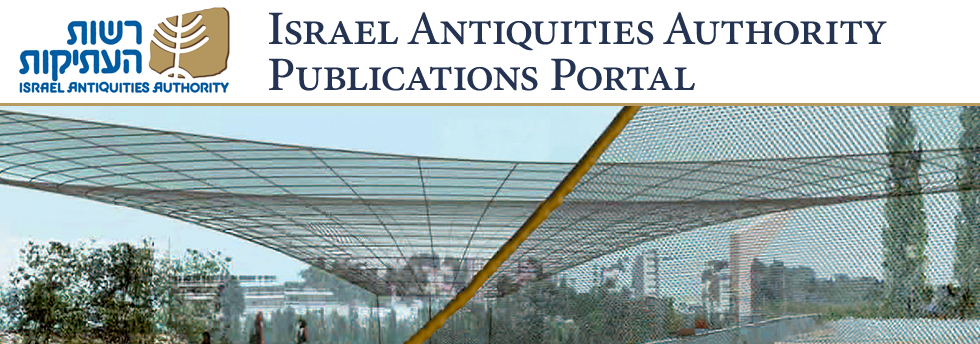Files
Download Full Text (80.7 MB)
Download Front Matter (649 KB)
Download Foreword (1.5 MB)
Download Chapter 1: Introduction (13.0 MB)
Download Chapter 2: The Pre-Dam Stratum (Stratum V) (9.7 MB)
Download Chapter 3: The Nahִal Tanninim Dam (Strata IV–III) (17.2 MB)
Download Chapter 4: The Low-Level Aqeduct to Caesare (Stratum IV) / Yosef Porath, Uzi ‘Ad and ‘Abed al-Salam Sa‘id (10.0 MB)
Download Chapter 5: The Flour Mills (Strata IV–III) (9.4 MB)
Download Appendix 5.1: The Provenance of the Basalt Millstones (248 KB)
Download Chapter 6: The Kurkar Quarries (Strata V–II) (6.1 MB)
Download Chapter 7: Other Structures in the Vicinity of the Dam (Strata IV–II) (6.2 MB)
Download Chapter 8: The Pottery (2.6 MB)
Download Chapter 9: The Glass Finds (1.5 MB)
Download Chapter 10: The Coins (701 KB)
Download Chapter 11: A Bilingual Inscription (859 KB)
Download Chapter 12: Metal and Wood Finds from the Dam and Flour Mills (3.9 MB)
Download Chapter 13: Wood Objects (506 KB)
Download Chapter 14: Wood and Metal Finds from the Operating Systems of the Ottoman Flour Mills (3.4 MB)
Download Chapter 15: Ceramic Tobacco Pipes (7.0 MB)
Download Chapter 16: Four Board Games (1.3 MB)
Download Chapter 17: Human Skeletal Remains (729 KB)
Download Chapter 18: Discussion and Summary (579 KB)
Download References (515 KB)
Download Appendix 1: Conservation and Reconstruction Work on the Dam, the Low-Level Aqeduct and the Mills (8.6 MB)
Download Appendix 2: Lists of Loci and Walls (379 KB)
Description
This volume describes the results of the IAA excavations at the Naḥal Tanninim Dam and the adjacent flour mills and water channels, conducted over 10 excavation seasons (2000–2005). This massive, sophisticated hydraulic facility was constructed in the early Byzantine period to convey water from the lower course of Naḥal Tanninim to the city of Caesarea Maritima to the south. To this end, the shared outlet of Naḥal Tanninim and Naḥal Ada through the coastal kurkar ridge was blocked by a massive gravity dam to create an immense reservoir, and a sluice diverted water to the Low-Level Aqueduct to Caesarea; the surplus water in the reservoir was used to operate a cluster of flour mills hewn in the bedrock to the west of the dam. As revealed in the present excavations, an apparent error in the calculation of the slope of the aqueduct prevented the delivery of the planned amount of water to Caesarea; thus, the portion of water diverted to the flour mills increased over the Byzantine period. The facility fell into disuse following the Muslim conquest, but the dam continued to block the outlet of the two streams and provide water to operate flour mills during the Ottoman period, until the early twentieth century. The water facilities and many finds uncovered in the archaeological excavations are now on display in the Naḥal Tanninim National Park.
EISBN
9789654067720
Publication Date
5-5-2023
Publisher
Israel Antiquities Authority
City
Jerusalem
Keywords
Roman dam, Roman aqueduct, Ottoman tobacco pipes, Conservation and reconstruction, Caesarea
Disciplines
Architectural History and Criticism | Historic Preservation and Conservation
Recommended Citation
Porath, Yosef; ‘Ad, Uzi; and al-Salam Sa‘id, ‘Abed, "71 | The Naḥal Tanninim Dam and Its Vicinity: Final Report of the 2000–2005 Excavation Seasons" (2023). IAA Reports—Monograph Series of the Israel Antiquities Authority. 4.
DOI: https://doi.org/10.69704/iaaRepV000.1996.04
https://publications.iaa.org.il/iaareports/4

Included in
Architectural History and Criticism Commons, Historic Preservation and Conservation Commons



